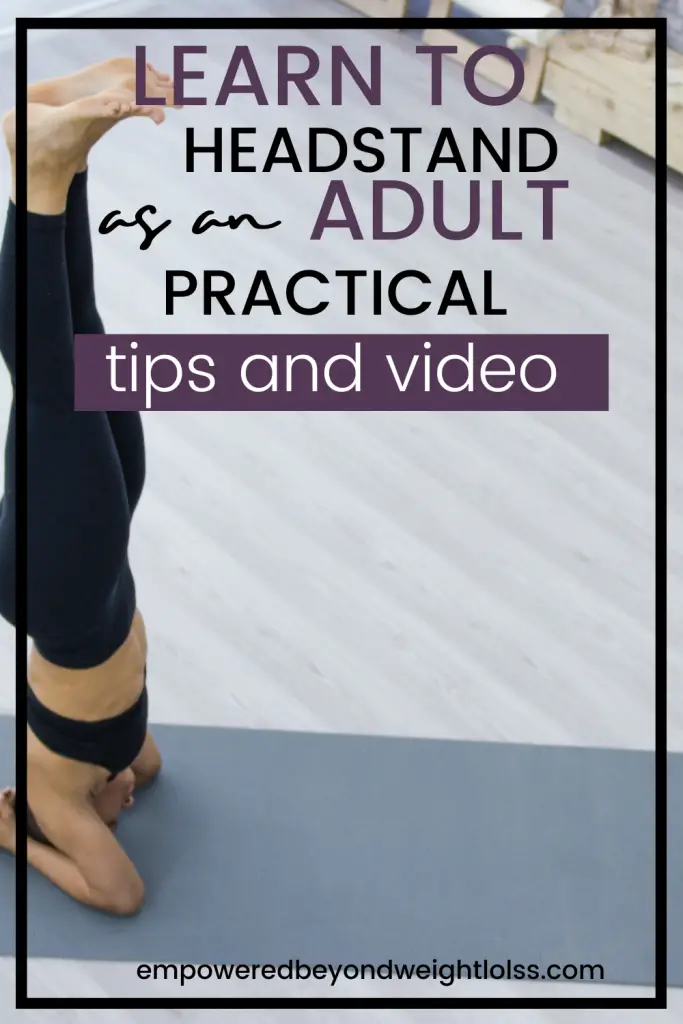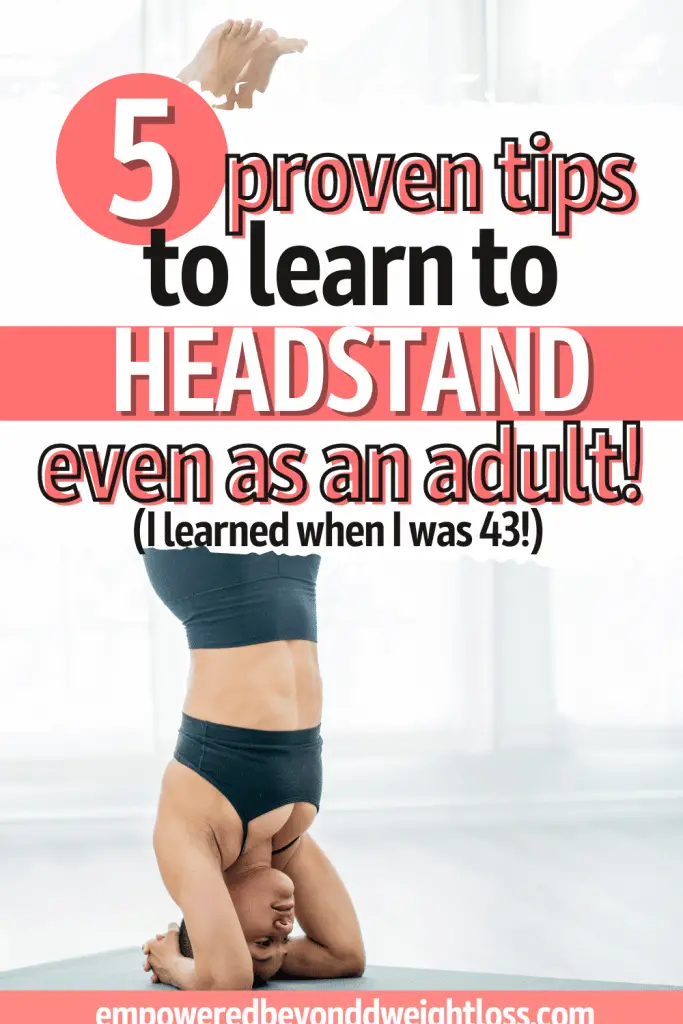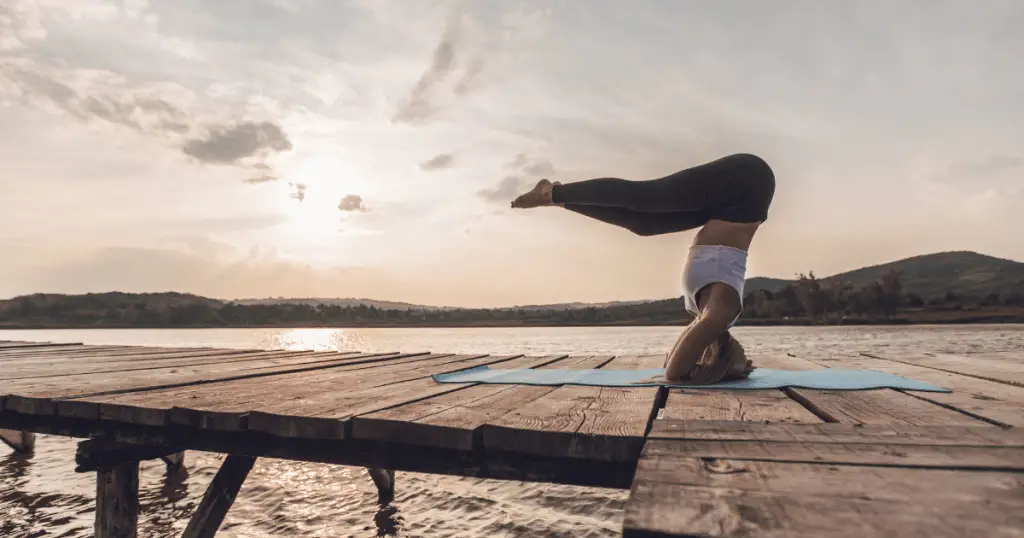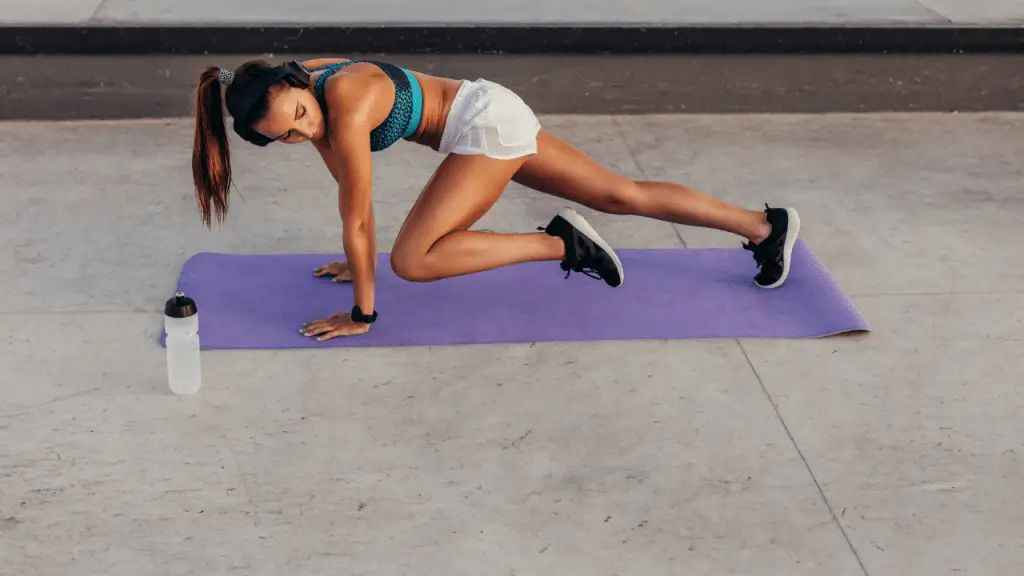As you learn to headstand, you will learn so much more. You will grow in your practice on and off the mat.
I had two primary goals when I started yoga at 43: doing the splits and learning to headstand (and handstand). Today, I share the best tips to help you learn to headstand as an adult. Many talented yogis seem to have been doing yoga their whole lives. My advantage here is that I remember clearly what was most challenging and what helped when I learned to headstand. It is so fresh in my memory! Give my tips a try, and let me know what you think!
Why Learn to Headstand?
Because it’s cool! No, seriously, there are many other reasons to headstand. An incontestable benefit I have gained from learning to headstand is overcoming fear. Most of us, particularly after 40, will feel some degree of fear of going upside down. Overcoming this fear and pushing your limits will teach you that you are capable of even more than you expected. Looking online, you will discover many other benefits of doing the headstand.
Headstand Benefits
Honestly, I don’t know how scientific these claims are, but here we go:
- alleviates stress and depression
- activates the pituitary and pineal glands
- stimulates the lymphatic system
- alleviates symptoms of menopause
- and more
Moreover, it will require you to learn to engage your core correctly, which benefits your overall yoga practice. In yoga, your core isn’t just about your abs. It integrates inside your feet through your thighs, inner hips, and chest.
How to Learn to Headstand Safely
There are two main safety concerns when you learn to headstand:
- Falling.
- Putting too much pressure on your neck.
Working in front of the wall will help you avoid falling. Moreover, you can put some pillows and blankets around you. Keep your head and neck aligned to protect your neck and press through your forearms and chest when you lift into your headstand.
Headstand vs Handstand
When I decided to learn inversions, I didn’t know the difference between a headstand and a handstand. I was looking at handstands, thinking that’s what I wanted to do. I envisioned headstands as too hard on my neck and head. I didn’t think I wanted to learn to headstand. That’s until I discovered that headstands are a relatively easy stepping stone to handstands. They are easier to learn and will help you practice being upside down.
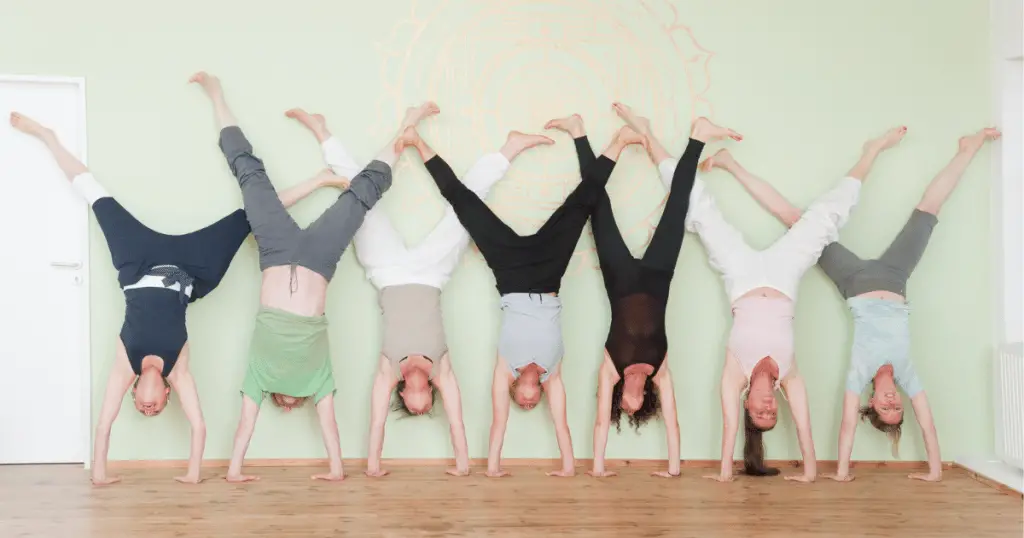
Learn to Headstand for Beginners: 5 Proven Tips
Sometimes, when working towards a goal, you get stuck. It’s part of the process! Then, you try something different, and you have a breakthrough. Eventually, that all leads to being able to do a headstand without the wall. That’s what my learn-to-headstand tips are all about. They summarize my breakthrough moments.
Don’t forget to scroll down to watch the video!
1. Press Through Your Shoulders and Forearms
This tip is not particularly new. You will hear other yoga instructors teaching you to press up through your shoulders and forearms to avoid putting all your weight on your head. However, it is a common mistake, and it was one of mine as well. Most people who learn to headstand find it hard on their heads. That’s one reason! Moreover, it’s a matter of getting used to this new pose. For example, when I started to tripod the headstand, I used a pillow under my head. Not anymore!
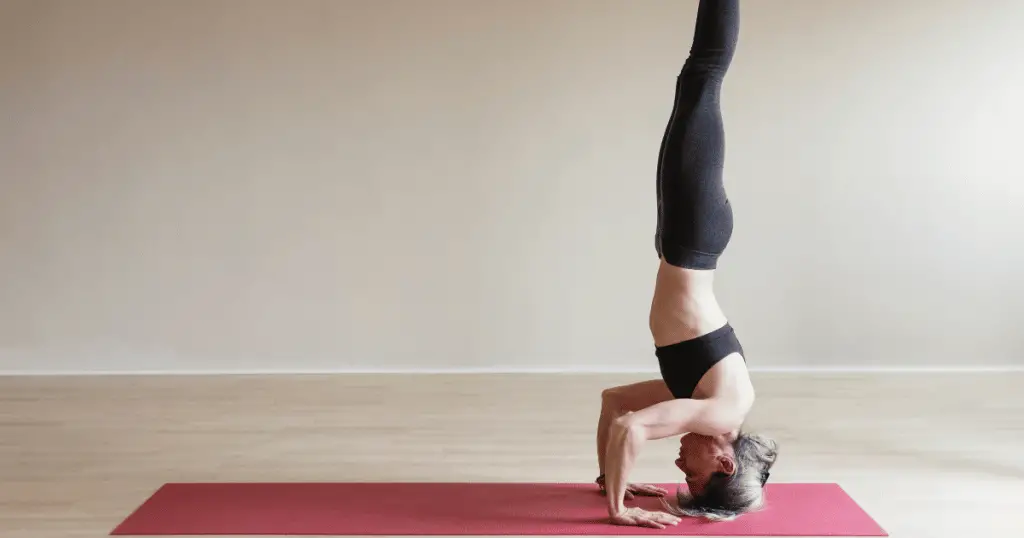
2. Bring Your Butt Back Further Than You Think
You will accomplish this in two ways:
- Lift on your toes with your feet as close to your head as possible.
- Using a prop like a yoga block.
Raising your hips high helps align your body correctly. You want to ensure your hips are stacked over your head. Being upside down can feel scary when you start as a newbie. The tendency is to avoid bringing your butt back far enough, which means not stacking properly.
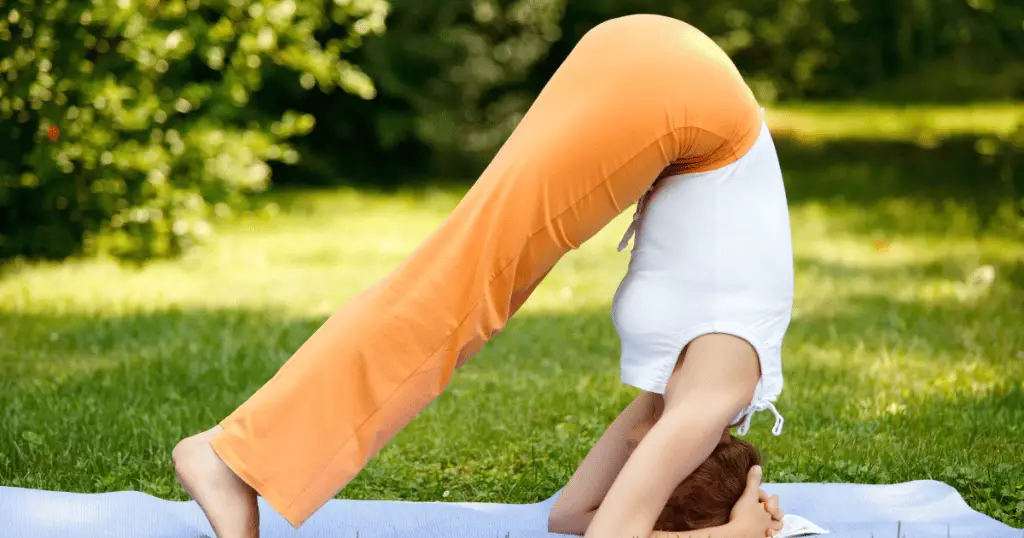
Notice how her hips are not stacked in a straight line over the rest of her body.
How to Ensure You Are Stacking Your Hips
If you are serious about practicing your yoga skills, I highly recommend you get into the habit of filming yourself. Filming yourself is invaluable to discovering any mistakes you may be making. To ensure you are stacking your hips:
- Feel your thighs engage as you walk your feet as close as possible.
- Raise your feet on yoga blocks if you need the extra height.
- Bring your butt further back than you think. It will feel scary to go too far back when you lift your feet off the floor. Your butt will move back in line with your head once your legs are straight up.
3. Avoid Using Momentum
Many learn-to-headstand tutorials will teach you to kick up to the wall after you set yourself up in the proper position (with the alignment we just discussed). That’s what I did, too! However, I had a breakthrough when I realized that avoiding the momentum would help me balance without the wall. So, instead of kicking up, I started lifting my legs with control using my core. I would raise my feet on yoga blocks and lift my legs slowly using strength rather than momentum.
4. Practice Toe Taps
Instead of focusing on learning to balance with your legs up, practice balancing with your knees bent. Toe taps are an effective way to approach this. Bend one knee at a time and balance there. See how many toe taps you can do each time. Try to outdo yourself every time you practice. This will enable you to learn the proper alignment and create muscle memory over time.
5. Tuck Headstand
I mentioned that you should avoid momentum when learning to headstand. One of the most effective ways to achieve this is to practice the tuck headstand. Stay there until you feel stable. Once you can balance in the tuck headstand, raise one leg at a time.

How to Tuck Headstand
The easiest way to get in the tuck headstand is to bend one knee at a time, just like when you practiced the toe taps. When you bend your knees, focus on bringing your knees as close to your chest as possible. Then, practice moving your knees up and down.
Learn to Headstand Video
Watch this video, where I demonstrate these five proven tips to learn to headstand.
How to Headstand Without the Wall
As a beginner, you will use the wall to protect yourself from falling whenever you lose your balance. However, as you practice, you will eventually notice that you don’t fall on the wall much anymore. Time to move away from the wall! When I decided to leave the wall, I often went outside to practice my headstand. Falling on grass is much more comfortable and less scary than falling on the hard floor. Furthermore, the ground outside is uneven, requiring you to practice balancing further.
Strengthening Moves to Get Your Headstand
As I mentioned a few times, doing the headstand requires using your core. You don’t need that much core strength to balance in the headstand, but strengthening your core will help. Plus, strengthening your core will give you a defined waistline and improve your overall quality of life by reducing back pain and improving your posture. Bodyweight core workouts are my all-time favorites!
That’s why I include them in my Full-Body Flexibility Transformation program.
More Workout Ideas
I like multipurpose bodyweight workouts. That’s one of the things l love most about yoga! Here, I am giving you more follow-along routines you can try. They are the types of routines that made a massive difference in my core strength and waist definition:
- 5 Yoga Poses for Strength and Flexibility
- 12-Minute Abs Workout for Women With Complete Follow-Along Video
- Top 9 Best Ab Exercises for Women (Bodyweight, Circuit-Syle)

If you love before and afters and want to learn more about my yoga transformation, please read 1 Year Yoga Transformation: Before and After Pictures.
